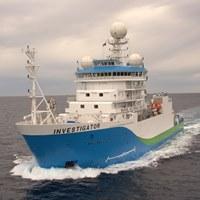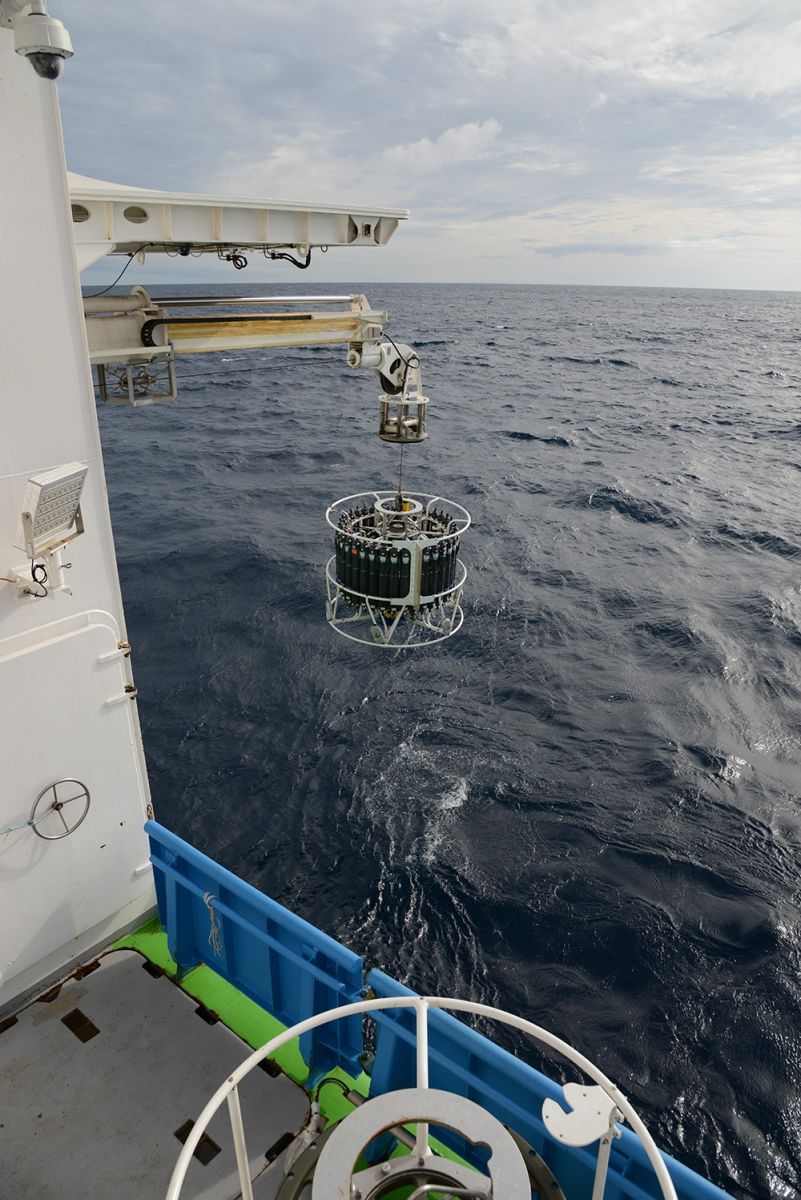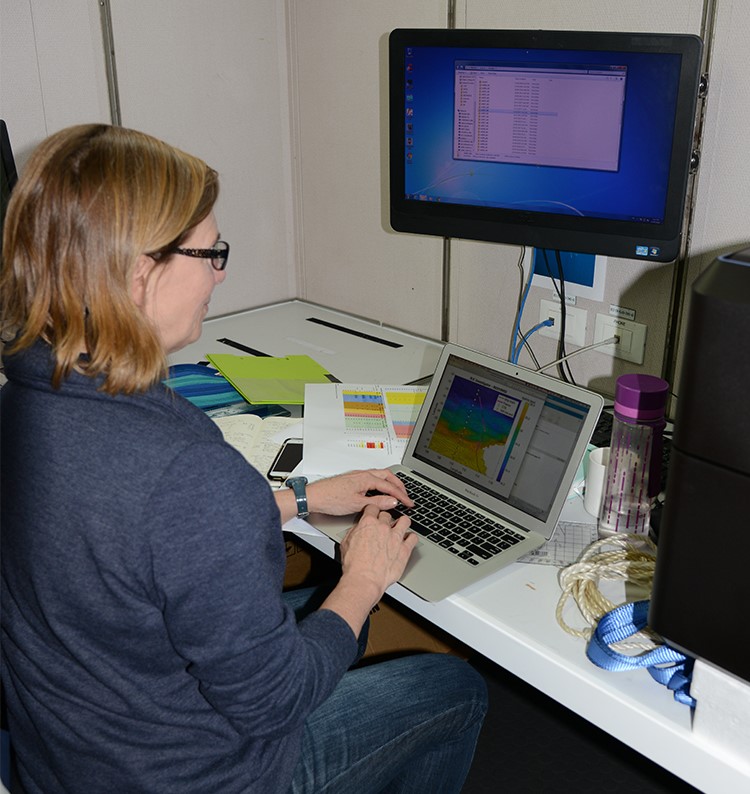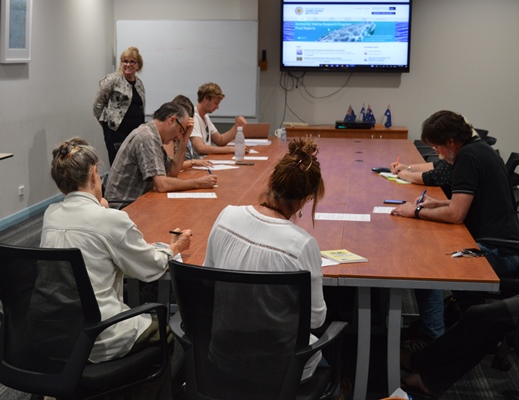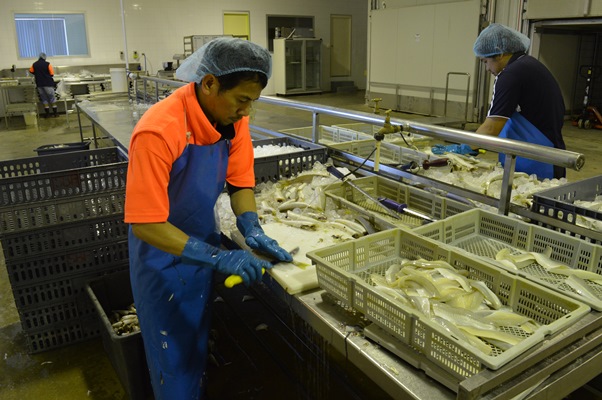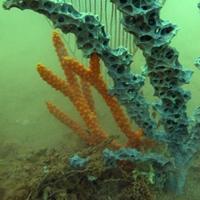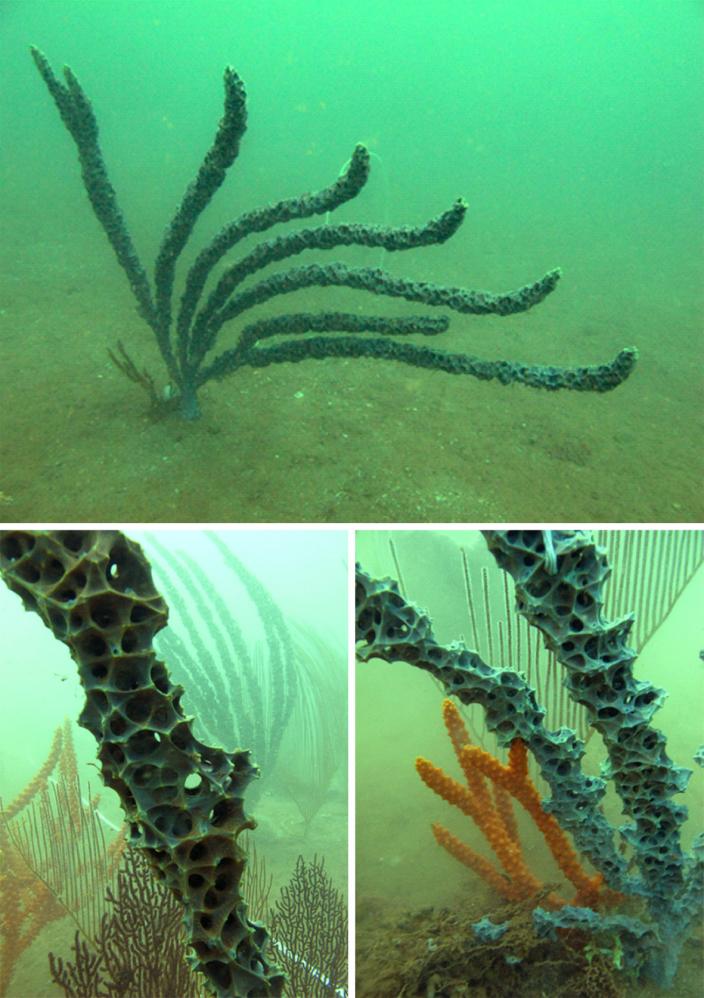Tiny Microbes, Big Impact – One Ten East Log
One Ten East Logs from the IIOE-2 voyage aboard RV Investigator will be posted on the WAMSI website during the month long voyage.
We have had another fantastic day in the Indian Ocean aboard RV Investigator. The CTD was deployed early in the morning and with a calm sea and light wind, the first station on the 110 East line was successfully completed. Micro and macro zooplankton have been collected with various nets, the CTD rosette was lowered twice and from those water samples, nutrients and microbes have been sampled for analysis.
We even had a minke whale sighted not too far from the ship and then two fin whales passed the starboard side and then across the bow! We have plankton and whales, life is good!
Log from One Ten East
The RV Investigator is currently undertaking oceanographic research along the 110°E meridian off Western Australia as part of the second International Indian Ocean Expedition. The voyage is led by Professor Lynnath Beckley of Murdoch University and the research is supported by a grant of sea time on RV Investigator from the CSIRO Marine National Facility.
| Date: May 18, 2019 | Time: 1200 AWST |
| Latitude: 38°S | Longitude: 110°E |
| Wind direction: N | Wind speed: 15 knots |
| Swell direction: SW | Depth: 4266 m |
| Air temperature: 13.7°C | Sea temperature: 13.8°C |
Notes: Station 1 is done and dusted. It was a very busy day with lots of samples and data collected by many satisfied scientists.
Tiny Microbes, Big Impact
By Dr Martin Ostrowski
Microbes are everywhere, they’re in the soil, on our skin, in our guts and they live in the ocean in incredible numbers. In a similar role to our gut microbes, which are keeping us healthy, research has revealed that ocean microbes play important roles sustaining our planet. What are these microbes and what are they doing? Onboard RV Investigator a team of microbiologists is addressing these questions using modern molecular methods. They aim to identify which microbes are present and determine how they thrive and interact with other species. This work will help us understand how these tiny organisms support the production of food in the ocean, which feeds over 1 billion people, and ultimately plays a fundamental role keeping our planet healthy.
Most marine microbes are planktonic, but surprisingly, they fundamentally shape their surroundings by transforming over 90% of all organic matter, driving major elemental and geochemical cycles, and making and breaking chemical compounds that have a direct effect on climate. What they lack in size, they make up for in sheer numbers.
The activity of microbes impacts on all levels of the marine systems, from water chemistry and primary production, which ultimately supports all marine life, through to regulating climate and playing a role in the health of the largest mammals on the planet. Over geological time, free-living marine microbes have been the main source of power for the planet. By modern estimates, approximately half of all primary production occurs in the oceans. In very general terms, this means that marine microbes are like the lungs of the planet, but in reverse, drawing in carbon dioxide and releasing oxygen for us to breathe.
Microbes are invisible to the naked eye, especially the single-celled species, which make up the bulk of ‘biomass’ in the oceans. Much of the work done in the microbiology lab involves flow cytometry and high-throughput genome sequencing of water samples collected from different depths using the CTD rosette of Niskin bottles. We use the cytometer to count different types of bacteria, cyanobacteria, micro algae and virus particles. There are more than one million microbial cells in each millilitre of seawater, and 10 times more viruses! Sequencing of microbial marker genes provides estimates of total diversity in the Australian marine microbiome.
Be sure to follow our daily Log from One Ten East at https://iioe-2.incois.gov.in or www.wamsi.org.au

